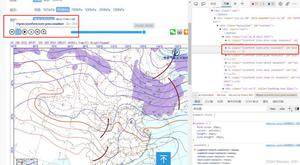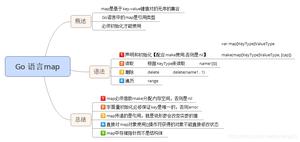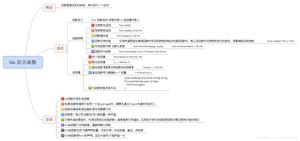python的文件操作方法汇总
文件的读操作
示例:
print("->文件句柄的获取,读操作:")
f = open('无题','r',encoding='utf8')
d = f.read()
f.close()
print(d)
print('->例二:')
f = open('无题','r',encoding='utf8')
e = f.read(9)
f.close()
print(e)
#python3中,文件中一个中英文都占位1
运行结果:
复制代码
->文件句柄的获取,读操作:
昨夜星辰昨夜风
画楼西畔桂堂东
身无彩凤双飞翼
心有灵犀一点通
->例二:
昨夜星辰昨夜风
画
文件的写操作
知识点:
1. 写操作前,文件先格式化清空文件
2.清空操作,在执行open的w方法后,清空
print("写的操作,写文件的时候,不能调用读方法,读文件的时候,不能调用写方法")
f = open('python','w',encoding='utf8')
f.write("I must learn python \nbecause, python is important \n")
f.write("java is better?")
f.write("maybe") #上面的语句,没有加换行符,所以输出的内容是紧接的
f.close()
运行结果:
打开文件后显示如下
I must learn python
because, python is important
java is better?maybe
文件的append方法
语法格式:
f = open('文件名','a','encoding = utf8')
文件这种方法为追加模式:1, 空白文件中,直接从头开始写入内容; 2 有内容的文件,会在末尾开始继续写入内容
示例:
f = open('python','a',encoding='utf8')
f.write("花开又花落")
f.close()
运行结果:
I must learn python
because, python is important
java is better?maybe花开又花落
readline 和 readlines
readline是逐行读取
readlines是全文读取
示例:
print("readline方法")
f = open('无题','r',encoding='utf8')
a = f.readline()
print("此时光标位置:",f.tell())
b = f.readline()
print("此时光标位置:",f.tell())
print(a.strip()) #strip是字符串方法中去除空格和换行的方法
print(b.strip())
print("readlines方法,会将每行的内容组成一个列表打印")
f = open('无题','r',encoding='utf8')
c = f.readlines()
print(c)
print(id(c))
print(id(f))
for i in c:
print(i.strip())
print("遍历方法")
f.seek(0)
for i in f:
print(i.strip())
f.close() #文件的操作中,close()方法一定不能忘记
运行结果:
readline方法
此时光标位置: 23
此时光标位置: 46
昨夜星辰昨夜风
画楼西畔桂堂东
readlines方法,会将每行的内容组成一个列表打印
['昨夜星辰昨夜风\n', '画楼西畔桂堂东\n', '身无彩凤双飞翼\n', '心有灵犀一点通']
37826824
5344280
昨夜星辰昨夜风
画楼西畔桂堂东
身无彩凤双飞翼
心有灵犀一点通
遍历方法
昨夜星辰昨夜风
画楼西畔桂堂东
身无彩凤双飞翼
心有灵犀一点通
文件的tell() 和 seek()方法
示例:
f = open('无题','r',encoding='utf8')
f.read(4)
print('当前光标位置',f.tell())
f.seek(10)
print('当前光标位置',f.tell())
f.close()
#read时,一个中文算三个字符
运行结果:
当前光标位置 12
当前光标位置 10
文件操作之flush方法
import sys,time
for i in range(20):
sys.stdout.write("#")
sys.stdout.flush()
time.sleep(1)
truncate方法
f = open('test','w')
f.write("hello")
f.write("\n")
f.write("python")
f.flush() #这样不用执行close方法,内存中的数据,就会写入到disk
f.close()
f = open('test','a')
f.truncate(2) #截断方法,光标从2开始往后截取
f.close()
其他的文件方法: r+ 读写方法
基于字符read & write
最基本的文件操作当然就是在文件中读写数据。这也是很容易掌握的。现在打开一个文件以进行写操作:
fileHandle = open ( 'test.txt', 'w' )
‘w'是指文件将被写入数据,语句的其它部分很好理解。下一步就是将数据写入文件:
fileHandle.write ( 'This is a test.\nReally, it is.' )
这个语句将“This is a test.”写入文件的第一行,“Really, it is.”写入文件的第二行。最后,我们需要做清理工作,并且关闭文件:
fileHandle.close()
正如你所见,在Python的面向对象机制下,这确实非常简单。需要注意的是,当你再次使用“w”方式在文件中写数据,所有原来的内容都会被删除。如果想保留原来的内容,可以使用“a”方式在文件中结尾附加数据:
fileHandle = open ( 'test.txt', 'a' )
fileHandle.write ( '\n\nBottom line.' )
fileHandle.close()
然后,我们读取test.txt,并将内容显示出来:
fileHandle = open ( 'test.txt' )
print fileHandle.read()
fileHandle.close()
以上语句将读取整个文件并显示其中的数据。
基于行的读写 line
fileHandle = open ( 'test.txt' )
print fileHandle.readline() # "This is a test."
fileHandle.close()
同时,也可以将文件内容保存到一个list中:
fileHandle = open ( 'test.txt' )
fileList = fileHandle.readlines()
for fileLine in fileList:
print '>>', fileLine
fileHandle.close()
或者在文件中一次读取几个字节的内容:
fileHandle = open ( 'test.txt' )
print fileHandle.read ( 1 ) # "T"
fileHandle.seek ( 4 )
print FileHandle.read ( 1 ) # " "(原文有错)
以上是 python的文件操作方法汇总 的全部内容, 来源链接: utcz.com/z/319446.html







